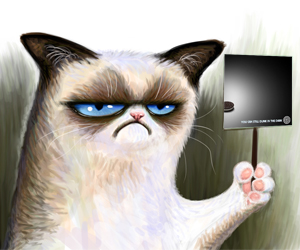 I’m going to say it: I wasn’t impressed by Oreo’s blackout tweet.
I’m going to say it: I wasn’t impressed by Oreo’s blackout tweet.
As I brace for the backlash, I’ll try to explain myself. I do realize that Oreo is making all the brands that invested $4 million for 30 seconds of interruption look foolish. Oreo is the talk of the town, and it’s not because of its own quite funny Super Bowl commercial (that’s right: I’m not going to call it the Big Game or El Plato Supreme) or it’s impressive efforts on Instagram re-creating photos sent by fans out of either Oreo cookie or Oreo cream, which I insist marketers would be talking about today if there hadn’t been a blackout. No, it’s because of a single tweet (I realize that it was also a Facebook post, but let’s call it a tweet for simplicity’s sake). It was a photo of an Oreo cookie in a pool of light surrounded by darkness and the words “You can still dunk in the dark”—and it was re-tweeted more than 15,000 times.
It was timely, on-brand and a much faster real-time response than any other brand (though brands like Tide and Audi had some great responses as well). If you were scouring the online marketing rags on Monday morning, you couldn’t click twice without running into an article about Oreo’s success.
But I wasn’t impressed by the tweet.
As Christian McMahan, former CMO of Heineken and a founder of Smartfish Group, said, “Think about it: How hard was that to do? So some ABM was at the agency with the brand team, and they slapped a half-clever blackout line on an existing piece of creative. Whoop-de-do.”
Red Bull’s Stratos campaign was tough. Setting up Beyoncé’s monstrous stage during a commercial break was tough. Even Oreo’s 100 Days campaign was tough (the creative in itself was such a storytelling device that barely any copy was necessary). Creating the blackout photo and writing the caption was easy.
I wasn’t impressed by the tweet. I was impressed by something else Oreo did.
I’ve read at least a dozen articles on the topic. Only a few looked past the tweet and mentioned the key to Oreo’s success that night. What was difficult, and what truly propelled Oreo to viral status, was that a brand and all its agencies worked together, ready to react in real time to anything and everything that happened during one of television’s biggest nights of the year. That was the key to its success. That impressed me (so yes, I was impressed after all).
A Year of Evolution in Social Viewing
As the years pass and major events recur, the rapid evolution of social viewing (or second-screen viewing) becomes more apparent. Every year, the Super Bowl, Grammy Awards and U.S. presidential election are more and more involved with the real-time web. This year, 85% of all Super Bowl ads between kickoff and the end of the game integrated technology hooks into second-screen experiences, a 7% increase from last year, according to Altimeter. The use of hashtags increased 31% from the previous year, while the use of corporate URLs and microsites declined 8%. Audiences are responding to real-time engagement mediums and abandoning destinations.
Social media was always a 24/7/365 proposition. Brands have to be ready to respond at any moment (within reason). But now brands have to be present at major pop-culture events, too. It won’t break a brand if it isn’t present, but that brand won’t have the opportunity to newsjack the event and earn millions of dollars’ worth of media exposure for the cost of an order of Chinese food and some major elbow grease.
It’s What’s on the Inside That Counts
The real-time web is here, whether brands want to admit it or not. Collaboration between brands and their agencies, particularly during major events, is critical. If audiences are becoming accustomed to hearing from brands in real time, how is a brand going to look if it takes days to respond to a simple Facebook comment or @ reply?
Maybe you’re a fan of the Oreo cookie outside, but in this case the creamy inside made the difference. Granted, Oreo’s original intent was to monitor conversations about its own commercial, but there is still a lesson to learn. The brands that are willing to do what it takes to respond in real time, finding ways to remove the red tape and reduce the time required for brand approval, will be in the best position to succeed in today’s social landscape.
Oreo is killing it lately. There’s no argument there. And that’s because they are fully submerged in the world of social media and creative fan engagement. Now it is up to other brands to try and catch up.
(image)



Pingback: 3 Brands Winning the Real-Time Media Game via @PostAdvertising
Pingback: 5 Lessons of Effective Editing for Viral Success via @PostAdvertising
Pingback: 3 Television Shows that "Get" Social via @PostAdvertising
Pingback: 3 Television Shows that “Get” Social « Marketing Research Tools
Pingback: 3 Brands Winning the Real-Time Media Game « Marketing Research Tools
Pingback: 3 Television Shows that “Get” Social | SmartROI
Pingback: 3 Brands Winning the Real-Time Media Game | SmartROI
Pingback: Getting the News into “Brand Newsrooms” | Post-Advertising, a Story Worldwide blog
Pingback: How to Create Real-time Twitter Gold | Post-Advertising, a Story Worldwide blog